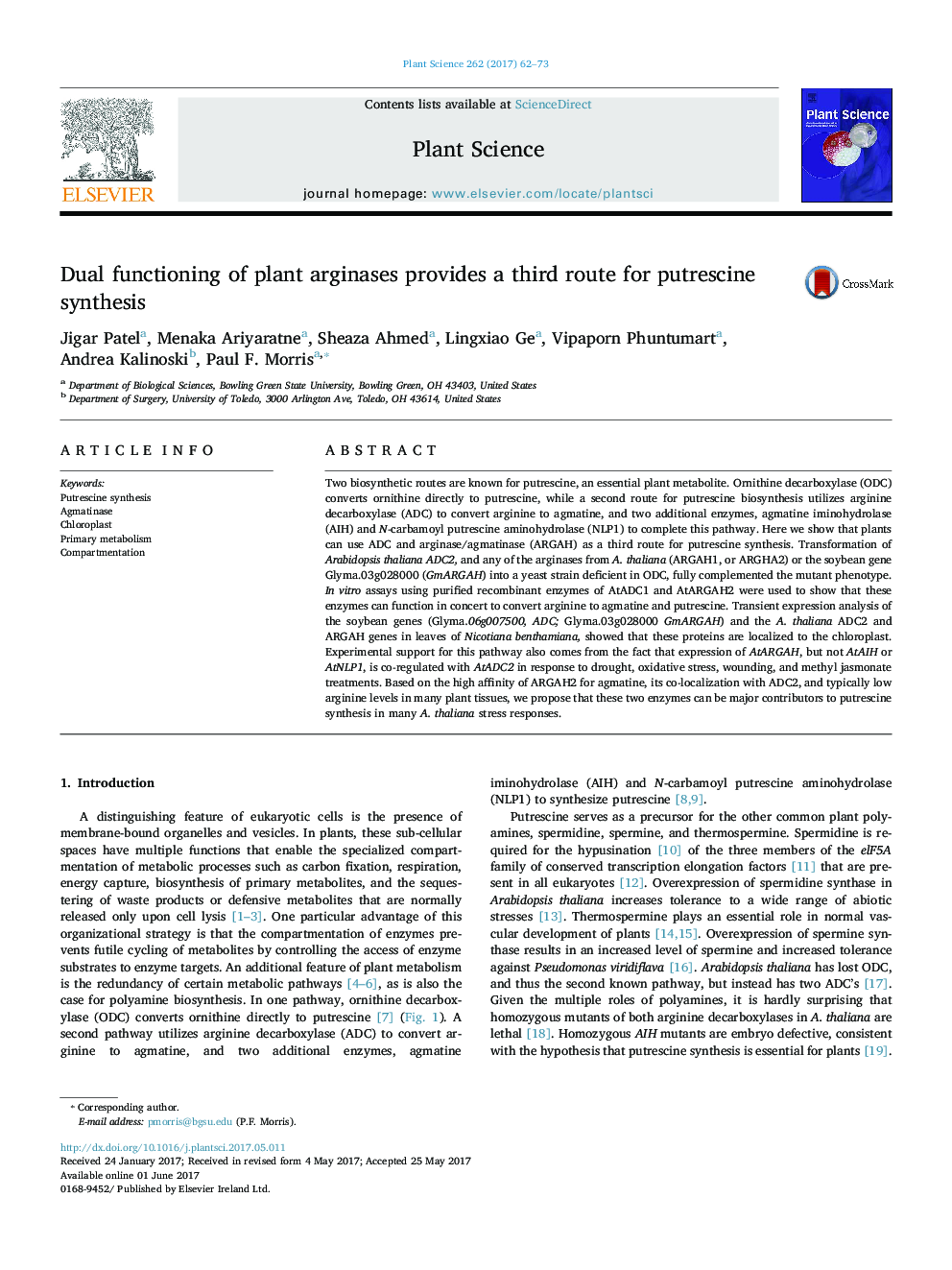| کد مقاله | کد نشریه | سال انتشار | مقاله انگلیسی | نسخه تمام متن |
|---|---|---|---|---|
| 5515739 | 1542027 | 2017 | 12 صفحه PDF | دانلود رایگان |
- ADC2 and ARGAH2 are localized to the chloroplast ADC2 and ARGAH genes enable putrescine synthesis in yeast mutants HPLC analysis shows that mixtures of ADC and ARGAH2 synthesize putrescine from arginine.
- Agmatinase (ARGAH2) has a higher affinity for agmatine than Agmatine iminohydrolase (AIH) All ARGAH enzymes have arginase and agmatinase activity.
- Michaelis-Menten parameters were calculated using a non-linear regression method and expressed as mean ± SE with GraphPad Prism software (http://www.graphpad.com/prism/Prism.htm).
Two biosynthetic routes are known for putrescine, an essential plant metabolite. Ornithine decarboxylase (ODC) converts ornithine directly to putrescine, while a second route for putrescine biosynthesis utilizes arginine decarboxylase (ADC) to convert arginine to agmatine, and two additional enzymes, agmatine iminohydrolase (AIH) and N-carbamoyl putrescine aminohydrolase (NLP1) to complete this pathway. Here we show that plants can use ADC and arginase/agmatinase (ARGAH) as a third route for putrescine synthesis. Transformation of Arabidopsis thaliana ADC2, and any of the arginases from A. thaliana (ARGAH1, or ARGHA2) or the soybean gene Glyma.03g028000 (GmARGAH) into a yeast strain deficient in ODC, fully complemented the mutant phenotype. In vitro assays using purified recombinant enzymes of AtADC1 and AtARGAH2 were used to show that these enzymes can function in concert to convert arginine to agmatine and putrescine. Transient expression analysis of the soybean genes (Glyma.06g007500, ADC; Glyma.03g028000 GmARGAH) and the A. thaliana ADC2 and ARGAH genes in leaves of Nicotiana benthamiana, showed that these proteins are localized to the chloroplast. Experimental support for this pathway also comes from the fact that expression of AtARGAH, but not AtAIH or AtNLP1, is co-regulated with AtADC2 in response to drought, oxidative stress, wounding, and methyl jasmonate treatments. Based on the high affinity of ARGAH2 for agmatine, its co-localization with ADC2, and typically low arginine levels in many plant tissues, we propose that these two enzymes can be major contributors to putrescine synthesis in many A. thaliana stress responses.
Journal: Plant Science - Volume 262, September 2017, Pages 62-73
